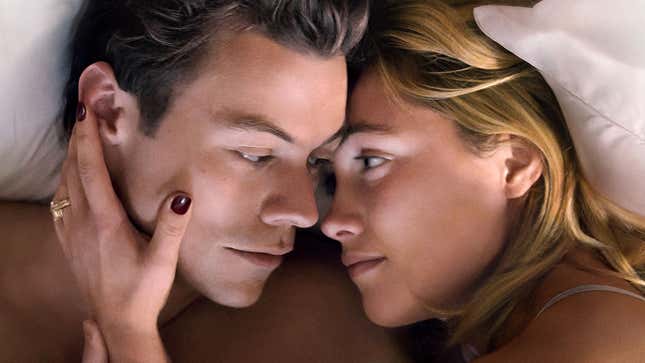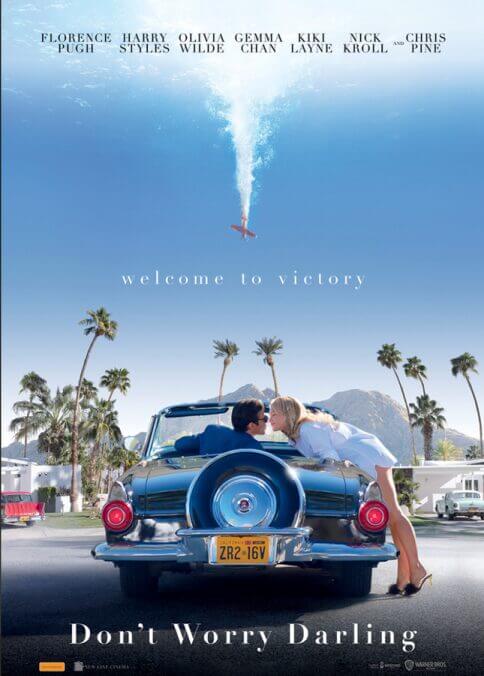Watching ‘Don’t Worry Darling’ in a Theater Packed with Harry Styles Fans
The Stylers in the crowd were rowdy, reverent, and actually a lot of fun to be around.
EntertainmentMovies

The day after the tickets for Don’t Worry Darling: The IMAX® Live Experience went on sale, I realized I should probably attend, in case the promised attached Q&A with its director Olivia Wilde and various cast members (though not Florence “Miss Flo” Pugh) managed to escalate the drama that has swirled around this movie since its production and well into its promotion. I found two remaining seats in all of New York, not 24 hours after the release of the tickets, both at the Regal UA Sheepshead Bay theater in South Brooklyn. “What do Sheepshead Bay residents care about festival drama?” I thought as I quickly snapped up the second-to-last available seat.
Well, they may or may not have cared about festival drama, but attendees of Monday’s screening definitely cared about Harry Styles. I’d guess something like 97 percent of the filled theater contained Gen Z Styles fans, most of them female-presenting and around the ages of 12 to 14. If I didn’t see the sea of shirts emblazoned with Styles’ image on them in the crowd, I would have known I was surrounded by Stylers just from the very loud reactions that most of his on-screen appearances and utterances elicited. Very early, it was very clear that crowd was very much there for him.
We were promised an experience, and an experience was what we got. The event was to begin at 7:30, and a few minutes after, that the Warner Bros title card showed only for the image to disappear from the screen within seconds. That started among the most disorienting 20 minutes I’ve ever spent in a movie theater. The movie would start playing again, a few second later, the sound would cut out, and then the image would disappear. This happened what felt like dozens of times. The scene snippets seemed to be shuffled—we’d see a bit of one here, a bit of another there, a bit of the first one again, etc. Sometimes stills flashed: Pugh holding up an empty cracked egg, Pugh apparently running from something in the desert while looking fearfully behind. It was as though the projector was throwing a tantrum. The overall effect was like watching a half-formed memory of a movie that I hadn’t brought myself to care about.
“Are you shitting my dick?” called out one audience member a few minutes into this discombobulating montage.
“They’re edging us!” shouted another.
-

-

-

-

-

-

-

-

-

-

-

-

-

-

-

-

-

-

-

-

-

-

-

-

-

-

-

-

-

-

-

-

-

-

-

-

-

-

-

-









































